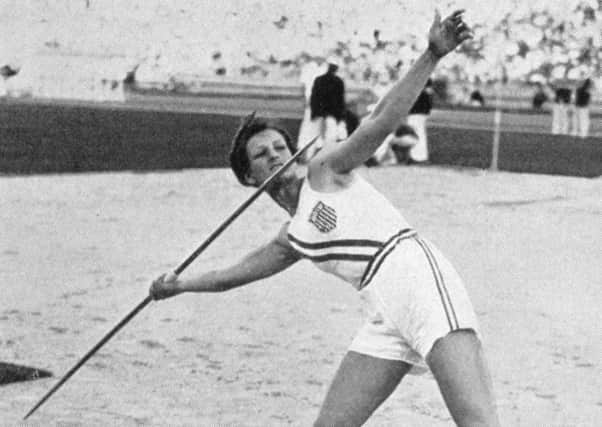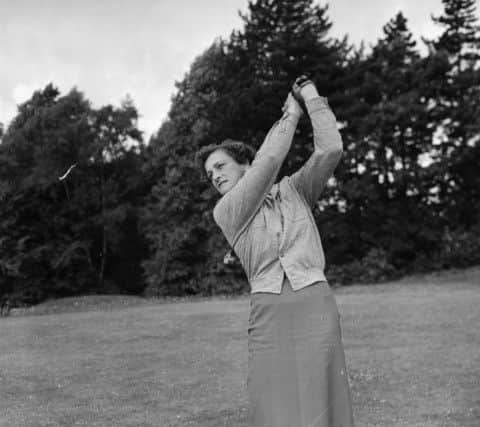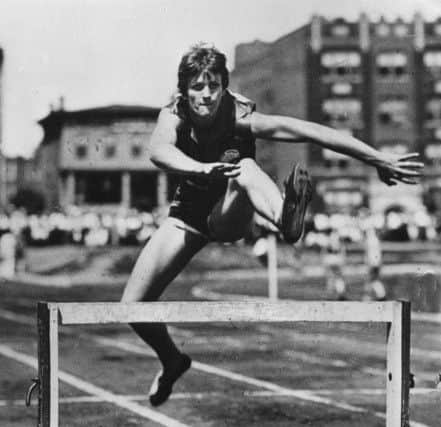Meet the greatest sportswoman ever... Babe Zaharias


ATTEMPTS to identify the best sportsman or woman of all time are extremely hazardous as ultimately it is all about personal opinion. Clearly extraordinary levels of achievement have to be met but intrinsic to the process – and complicating it – is the need to compare athletes from different sports and eras.
Greatness achieved in more than one sport, though, may legitimately nudge a candidate ahead of others. Babe Zaharias, during a 25-year career in top-level sport, achieved All-American status (USA’s top award for amateurs) in basketball, won Olympic gold medals, set world records in athletics, dominated women’s golf at world level, both amateur and professional, as well as distinguishing herself in baseball, volleyball, tennis, swimming, and diving. At the risk of understatement, she has to be in the frame.
Advertisement
Hide AdAdvertisement
Hide AdBorn in 1911 in Texas to Norwegian parents, Mildred Ella Didrikson was ‘a tomboy’ who excelled in all sports at school. The nickname “Babe” was given to her in recognition of early baseball prowess, Babe Ruth being the top sports star at the time. Soon basketball became her first love. After high school, she began working for a Dallas insurance company which fielded a basketball team, the Golden Cyclones. In 1930, 1931 and 1932, it won the National Championships, with ‘Babe’ being awarded All-American status in each of the three seasons.


Having dabbled in athletics, she also began taking it more seriously, entering the National Championships in 1930 when she won the javelin, baseball throw and long jump. In the next year’s championships she again secured three titles, in long jump, hurdles and baseball throw, while, in the 1932 version, she won five events and tied for first in a sixth, setting three world records in the process. In that year’s Olympics in Los Angeles, women were allowed to compete in only three events. She won the javelin and hurdles, both in world and Olympic records; in the high jump she tied for first, but in the jump-off for gold, her leap was ruled illegal and she had to settle for silver.
After the Games she decided to cash in on her Olympic success and turned professional. Shortly before this, she had played her first game of golf at the invitation of the famous sportswriter, Grantland Rice. Despite being a novice, her length of shot was prodigious, a portent for the future.
She became hooked on the game and played as much as she could while touring the country giving sporting exhibitions and doing vaudeville shows performing song-and-dance acts and playing the harmonica. Her golf improved to the extent that she won the Texas Women’s Amateur Open in 1935. However, the sheen was taken off that win when shortly after she was declared a professional because she had earned money in other sports.
She began playing exhibition matches with players such as Tommy Armour and Gene Sarazen, who both gave her tuition. In 1938 she married a professional wrestler and sports promoter of Greek descent, George Zaharias, known as “The Crying Greek from Cripple Creek”. Soon he took her on a lucrative promotional tour of Australia and New Zealand but her golf ambitions remained unsatisfied.


As there was little competitive women’s pro golf at this time, she decided to apply for reinstatement as an amateur, which was granted. She was soon successful and in 1946 won the US Ladies Amateur title by a resounding 11 & 9. Next in her sights was the British Ladies Amateur, probably the most prestigious championship then. In 1947 it was held at Gullane, which it would be fair to say she took by storm. The polite and subdued galleries there had seen nothing like “the Babe”.
She was an outgoing self-publicist bursting with confidence who liked to arrive at a course and announce “The Babe is here – who’s gonna be second?” She loved interacting with the gallery and enjoyed amusing them with a repertoire of trick shots. To some she appeared brash and arrogant while others liked her straight talking and humour.
The quality of her golf, though, was never in doubt. In the semi-final, before a crowd of 5,000, she defeated the top British player, Jean Donald, of North Berwick, then French and Scottish champion, before clinching the title against Jacqueline Gordon. Afterwards she posed in a kilt and performed a highland fling for the press. Aside from the showmanship, she acknowledged later in her autobiography that winning at Gullane was “the most important event for me in sports”. Two days later she played at Lothianburn, Edinburgh, at the suggestion of Tommy Armour, who had been a member there. In front of a crowd of 3,000 she played a foursome with members Messrs. Fisher, McIlwrick and Simpson, all of whom she regularly outdrove, despite the latter having been runner-up in the British Amateur.
Advertisement
Hide AdAdvertisement
Hide AdAmong the crowd was the Scottish comedian, Wull Fyffe, with whom at the end she sang A wee deoch n’doris with his Balmoral bunnet on her head.
On her return to New York she disembarked from the Queen Elizabeth in her kilt, announcing to the waiting press: “I loved ’em in Scotland.”
She turned professional and went on to sweep all before her in the States. She won the US Women’s Open in 1948, 1950 and 1954, the latter by 12 strokes after being operated on for cancer the year before, and regularly topped the money winners’ lists.
Despite continuing ill health, she won more tournaments, the last one in 1955, but cancer returned and she died in 1956, aged 45.
Given the level of her achievements in different disciplines over a lengthy period and her successful comeback after cancer surgery, a strong case can be made for her as the greatest sportswoman of all time. Although not determinative of the issue, in 1950 US sports editors voted her “lead woman athlete of 50 years” and, in 1999, the Associated Press accorded her the title “Woman athlete of the 20th century” .
On her gravestone in Beaumont, Texas, are inscribed the words: “World’s Greatest Woman Athlete.” Perhaps the last word is best left to Grantland Rice, who wrote: “Watching her perform you understand you are looking at the most flawless section of muscle harmony, complete physical and mental coordination the world of sport has ever seen.”